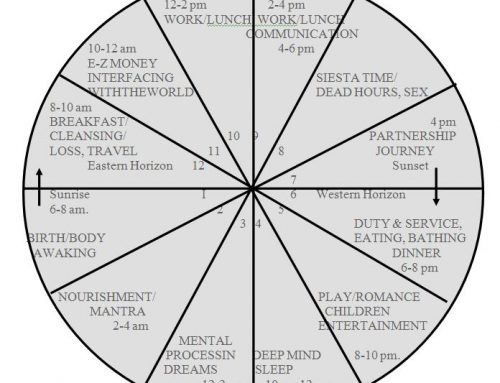A long time ago, the visionaries of the Indian subcontinent, (called ‘rishis’ or ‘seers’), discovered three basic truths. First, all beings want to be happy. How we define happiness differs among individuals and cultures, but this one truth remains constant. Second, they found that for long-term happiness, it is better to live with rather than against nature. This means that, while jumping off a cliff may feel exhilarating in the short term, the breeze lifting your hair as you slice through the air, nature inevitably catches up to you. Short-term pleasure is easy; keeping it up is not. Activities that give us pleasure do not necessarily lead to happiness- and those that promote happiness are not always pleasurable! If you want to fly while keeping your organs intact, it is best to study gravity and the laws of aerodynamics first, and apply them judiciously in your attempts at flight.
The rishis of ancient India did just that (though not necessarily in the realm of aerodynamics), and passed down their secrets to us via oral tradition. They called the laws of nature as well as the practice of following them dharma. This is the third insight: dharma is one, but it is useful to see it through the lens of five important subcategories (see fig. 2.1)
| Level of Dharma | Science | Area Affected |
| Physical
|
Ayurveda | From the skin, in: how to care for and relate to your body |
| Environment | Vastu Shastra | From the skin out: how to care for and relate to your physical environment |
| Social | Dharma Types | Non-physical environment: how to care for and relate to your society. |
| Spiritual | Yoga | How to care for and relate to your spiritual self; Ethics and morals, non-physical, local environment |
| Cosmic | Jyotisha | Outer space- from the skin of the planet out- how to understand your karma, and relate to the planets, stars & cosmos |
This table illustrates the five levels of dharma, or natural law, and the disciplines that help us live accordingly. Note that the Dharma Types, being in the middle, straddle the others, and are implicated in living a dharmic life on every level. They are also particularly useful because they are not hard to learn. While mastering Ayurveda or Jyotisha can take a lifetime (or more!), getting a handle on the dharma type is far less demanding. To find out more about dharma types, go here.
Relationships and the 5 Levels of Dharma
The first level—the level of self—is dedicated to everything that is you, from the skin in. It is the realm of Ayurveda, which teaches us how to understand diet and lifestyle in order to experience the most lasting pleasure and happiness from the physical body. Good relationships are possible with a sickly body, but they are much easier when both partners are healthy and vibrant, which is why addressing this vital aspect of relationship health—health itself—is job number one.
The second level of dharma deals with how you relate to your physical environment, everything from your skin to the skin of the planet, the atmosphere. This entails learning how to turn our houses into homes; comfortable living environments that support our physical, emotional and spiritual well being, as well as that of the planet.
Next is the level of social fulfillment. This is where the dharma type is particularly useful. Everyone is born with gifts to share, and your dharma type will help you find and express them. Don’t know your type? Try taking the dharma test– it will help you find your true caste, regardless of your birth or station in life.
The fourth level of dharma is devoted to ethics and morals, and how you relate to your spiritual self. Techniques for how to incorporate spiritual practices abound in the yogic and tantric traditions and I won’t discuss these here.
Finally, the fifth level relates to everything outside our earthly environment. Broadly speaking, it is the realm of the cosmos, and how we relate to the macrocosm of the universe. Our ancient ancestors believed as above, so below- that the position of the planets and stars in the heavens has a lot to say about the nature of our karmas, both past, present and future. Jyotisha, Vedic astrology, helps us make sense of those karmas by unraveling the map of our lives displayed in the heavens, including how to time anything in our lives for optimal success.
The word ‘karma’ is often associated with reincarnation, but you don’t have to believe in reincarnation to realize that you are affected by the past. A look at your genetic heritage over many generations is a look back at the karma (actions and their consequences) of your ancestors and how that is playing out today. From alcoholism and diabetes to behavioral and spiritual attitudes, we are influenced by the past, while possessing the free will to act on it and create our future. In this way, karma is both fate and free will, separated by time.
Karma is both fate and free will, separated by time.
The free will of today creates our experience of tomorrow. Indulge in ice cream and candy often enough, and you suffer the effects of this sugar abuse in the form of diabetes and poor health. Likewise, if you have inherited physical patterns of self-neglect from your predecessors, you can do something about them starting today, and create a more balanced life for yourself tomorrow. Just how to do that is the realm of dharma, and doing your dharma eventually erases karma.






